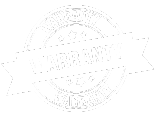Modern vehicles are smarter, safer, and more advanced than ever before, thanks in large part to Advanced Driver Assistance Systems (ADAS). These technologies, including lane departure warnings, blind spot monitoring, and automatic emergency braking, help reduce human error and enhance safety. However, these advanced features depend heavily on the precision of sensors and cameras—many of which are mounted directly on the windshield.
When your windshield is repaired or replaced, the position and alignment of those components can shift, even slightly. That’s where ADAS calibration becomes essential. Without recalibration, those systems may no longer function correctly, putting you and others at risk on the road.
If you're unsure whether calibration is truly necessary or just an added service, this guide breaks down what you need to know. We’ll walk through the importance of calibration, frequently asked questions, and expert insight into how to ensure your system works properly after any windshield service.
What Is ADAS Calibration?
ADAS calibration is the process of realigning the cameras, sensors, and radar systems that control your vehicle’s safety features. These components are programmed to operate within extremely tight tolerances, often within fractions of a degree or millimeter.
Common features that rely on properly calibrated systems include:
- Adaptive cruise control – Maintains a safe distance from the vehicle ahead
- Lane keep assist – Helps steer the car within its lane
- Forward collision warning – Alerts the driver if a crash is imminent
- Automatic emergency braking – Engages brakes when a collision is unavoidable
- Blind spot monitoring – Alerts you to vehicles in adjacent lanes
Even minor misalignments can disrupt these systems, causing them to behave unpredictably. For instance, a miscalibrated camera may delay braking or trigger false warnings, which can create dangerous driving conditions.
Why Does Windshield Replacement Affect ADAS?
Most people think of the windshield as a protective barrier from wind, debris, and weather. While that’s true, it also serves as a structural anchor point for many ADAS components. Cameras and sensors are often mounted to the interior or exterior of the windshield, positioned in specific locations to provide accurate visual or radar-based input to your vehicle’s control systems.
When a windshield is replaced, even the most careful installation can result in slight deviations in position. These changes are invisible to the naked eye but significant enough to affect the readings of your ADAS. Without recalibration, the system may receive inaccurate data about your surroundings—leading to compromised decision-making by your vehicle’s safety systems.
It’s not just replacement that matters. Even chip repairs or resealing services can impact the alignment of the attached equipment. That’s why calibration should always be considered any time windshield work is performed.
Five Key Facts About ADAS Calibration
1. Every Windshield Service Requires Recalibration
Regardless of how small the job seems, any disruption to the windshield can affect sensor alignment. A chip repair may appear insignificant, but the heat and pressure used in repair processes can still shift components slightly. Full windshield replacements almost always alter camera positioning, which directly impacts the ADAS system’s accuracy. Calibration ensures your vehicle's safety features remain reliable and responsive.
2. There Are Two Types of Calibration
Different vehicles require different types of ADAS recalibration:
- Static calibration is performed in a controlled shop environment using manufacturer-specific targets and tools. This process typically involves setting up alignment boards at precise distances from the vehicle to guide the sensors into proper configuration.
- Dynamic calibration requires the vehicle to be driven under specific road conditions and speeds. During this process, the system calibrates itself using live data from the road, traffic, and environment.
Some vehicles require just one method, while others demand both. The correct calibration process depends entirely on your vehicle's make, model, and specific ADAS system requirements.
3. Skipping Calibration Could Void Your Warranty
Most modern vehicle warranties include clauses requiring proper maintenance of ADAS components. If recalibration is skipped after a windshield replacement, and a related safety feature fails, the manufacturer may not cover the repair or resulting damage. Furthermore, skipping this step could also affect your insurance coverage in the event of an accident—especially if a safety system is found to be malfunctioning due to misalignment.
4. Calibration Is Not a DIY Job
Precision is everything in ADAS calibration. Attempting to adjust sensors manually without the proper tools and training can make the situation worse. Professional calibration requires factory-approved software, alignment fixtures, diagnostic equipment, and technicians trained in specific manufacturer procedures. Trying to skip this step or cut corners can result in unreliable safety systems and increased liability.
5. Insurance Often Covers Calibration
Many insurance policies that cover windshield replacement also cover ADAS calibration. Since it’s considered a necessary component of the replacement process, reputable insurance companies view it as a safety-related cost rather than an optional add-on. Still, it’s best to confirm with your insurance provider to understand what’s included in your coverage.
Common FAQs About ADAS Calibration
Q: How long does ADAS calibration take?
A: The time varies depending on your vehicle and the type of calibration. Static calibration typically takes one to two hours, while dynamic calibration may require up to three hours, especially if conditions like clear roads and specific speeds are needed.
Q: What happens if I skip it?
A: Failing to calibrate your ADAS system after windshield service can lead to sensor errors, false warnings, and failure of critical safety systems like automatic braking and lane assist. In worst-case scenarios, it can result in delayed reactions during emergencies and increase the likelihood of collisions.
Q: How do I know if my car needs ADAS calibration?
A: If your vehicle is from 2016 or newer and includes any driver assistance technologies such as lane keep assist, adaptive cruise control, or automatic emergency braking, calibration is required any time the windshield is disturbed.
Q: Can a small chip repair affect ADAS?
A: Yes. Even chip repairs can introduce enough change to throw off camera alignment. Any time glass near the sensor mounting points is altered, it’s best to conduct a calibration check to be safe.
The Real-World Risk of Skipping Calibration
Imagine your car misjudging the distance between you and another vehicle. Your automatic braking system might activate too late, or not at all. A misaligned lane assist system could cause your steering to pull in the wrong direction without warning.
Even a tiny shift in a front-facing camera can cause major safety issues. These systems are designed to respond in real time, based on exact readings of your environment. If calibration is even slightly off, the system may fail to interpret road conditions accurately, leading to dangerous misjudgments when you least expect it.
How to Know If Your ADAS Calibration Was Done Right
After windshield service, it’s natural to assume everything was restored to working order—but how can you really be sure? Here are five signs that your ADAS calibration was properly performed:
- No dashboard warning lights
If your calibration was successful, there should be no persistent ADAS-related warnings on your dash. - All safety features function as expected
Lane keep assist, adaptive cruise, emergency braking, and blind spot detection should all respond appropriately in real-world driving. - The vehicle handles normally
Steering should feel smooth, and there should be no drifting or overcorrection from automated systems.
You receive proper documentation
A trustworthy repair shop will provide proof of calibration and explain the procedures completed. - OEM tools and specs were followed
Ask if the technicians used manufacturer-specific equipment and alignment procedures, not generic tools or guesswork.
Pro tip: Never leave without asking for documentation. A reputable technician will gladly walk you through the process and show you the results of your recalibration.
Ready to Get Started?
If your windshield was recently repaired or replaced, it’s important to ensure your ADAS system is properly calibrated. At Blue Ridge Auto, we use manufacturer-approved tools and expert diagnostics to keep your vehicle’s safety features functioning exactly as they should.
Whether you drive a Toyota, Ford, or BMW, our certified technicians have the experience and tools to calibrate your system with accuracy and care.
Schedule your service appointment today or contact us if you have any questions about ADAS calibration or windshield repair.
When a car starts acting up with dimming lights, a dead battery, or electrical glitches, many drivers assume the battery is to blame. However, the real issue is often deeper within the charging system. The alternator plays a critical role, and if it fails, your car can come to a complete stop. Understanding how it works, why it fails, and how much it costs to fix can save you time, money, and stress.
This guide explains everything you need to know about alternator failure, including warning signs, repair costs, and how to prevent future problems.
What Does an Alternator Do?
The alternator is a compact but powerful generator that is driven by the engine using a belt. It generates electricity while the engine is running and powers systems like the headlights, power windows, dashboard instruments, and infotainment system. It also recharges the battery while you drive.
If the alternator stops working, your vehicle can only rely on the battery for a short period before shutting down completely.
What Happens When the Alternator Fails?
When the alternator starts to malfunction, your vehicle’s electrical systems begin to suffer. At first, you may notice subtle issues like dimming lights or flickering dashboard gauges. If the issue is not addressed, it can lead to a total power loss.
Unlike a battery that can be jump-started, a faulty alternator cannot recharge the battery. Once the battery drains, the vehicle will no longer run.
Common Signs of Alternator Failure
Recognizing the early signs of alternator trouble is key to avoiding major issues. Some symptoms are similar to those of a bad battery, but when several appear together, they likely point to a problem with the alternator:
- Dim or flickering lights: Lights may dim when idling and brighten when accelerating, indicating inconsistent voltage.
- Dead battery: A battery that keeps dying after being replaced may not be receiving a proper charge from the alternator.
- Dashboard warning lights: You may see a battery-shaped icon or labels such as “ALT” or “GEN” on the dashboard.
- Electrical malfunctions: Power windows may operate slowly, heated seats may stop working, and digital displays may behave erratically.
- Unusual noises: Grinding or whining sounds from under the hood can mean the internal components of the alternator are wearing out.
- Stalling or trouble starting: Since the alternator helps power the ignition, a faulty unit can cause difficulty starting or frequent stalling.
What Causes Alternator Failure?
Although alternators naturally wear out over time, certain factors can cause them to fail sooner:
- Worn-out bearings: Bearings degrade with age and use.
- Malfunctioning voltage regulator: This part manages how much electricity the alternator produces. If it fails, your system may not charge correctly.
- Loose or broken belt: The serpentine belt that drives the alternator can slip or break.
- Excessive electrical demand: Adding aftermarket electronics, like high-powered sound systems, can put extra strain on the alternator.
- Fluid damage: Oil or coolant leaks can contaminate the alternator and cause internal damage.
How Mechanics Diagnose Alternator Issues
A mechanic will check the battery, belts, fuses, and alternator output to pinpoint the problem. A car that will not start does not always mean the alternator is the issue. It could be caused by a weak battery, corroded cables, or a faulty fuse. Diagnosis typically includes:
- Measuring the battery voltage
- Testing alternator output with the engine running
- Inspecting the condition and tension of the belt
- Checking wiring and ground connections
Modern diagnostic tools can detect voltage drops that confirm alternator failure.
Repair vs. Replacement: What's Typical?
In older vehicles, it may be possible to repair individual parts of the alternator. For most newer models, full replacement is the standard because of integrated electronics and limited engine space.
Replacement involves removing the faulty unit, checking the belt system, and installing a new or remanufactured alternator. The overall process is simple, but labor time can vary based on how accessible the alternator is.
What Are the Typical Costs?
The cost to repair or replace an alternator depends on several factors:
- Vehicle type: Some makes and models have more expensive parts and labor.
- Type of replacement part: OEM parts are usually more expensive than aftermarket or remanufactured options.
- Labor requirements: The easier the alternator is to reach, the lower the labor cost.
To get an accurate price, it is best to schedule a diagnostic check with a trusted mechanic. This allows them to assess the issue and provide a specific quote for your vehicle.
Is It Safe to Drive with a Bad Alternator?
Technically, yes. But it is highly risky. Once the battery runs out of charge, your vehicle will lose power completely. This could lead to loss of headlights, power steering, or engine control—posing a serious safety hazard.
Even if the car seems fine, you should have it checked immediately to avoid unexpected breakdowns.
Tips to Prevent Alternator Failure
While you cannot prevent wear and tear entirely, you can extend your alternator’s life by following these tips:
- Get the charging system checked once a year: Many auto shops include this in standard vehicle inspections.
- Fix fluid leaks promptly: Prevent oil and coolant from damaging electrical components.
- Limit extra electrical loads: Avoid running multiple high-demand systems at once, especially aftermarket ones.
- Inspect belts during routine service: Catch wear and slippage early.
- Drive your car regularly: Since the alternator only works while the engine runs, regular driving keeps the system healthy.
When to Seek Help
If your car is showing any combination of warning signs like dim lighting, stalling, or electrical failures, it is time to schedule an inspection. Addressing these issues early can prevent more expensive repairs and help you avoid getting stuck on the road.
Need Alternator Help? Schedule an Inspection Today
If your vehicle is showing signs of alternator failure, getting a professional diagnosis now can help you avoid an unexpected breakdown later. At Blue Ridge Auto, our experienced technicians will pinpoint the issue and recommend the best solution, whether that means a quick belt adjustment or a full alternator replacement.
Schedule a service appointment today or contact us to learn more about our repair services and how we can help keep your car running smoothly.
Maintaining your vehicle often raises one crucial question: how long can you really stretch between oil changes? While some might argue you can push it to 10,000 miles without worry, your owner's manual holds the real answer tailored to your car’s specifics.
The golden guideline is that many modern cars can go between 5,000 to 7,500 miles between oil changes when using synthetic oil. Could extending it harm your engine? Think about the long-term cost of neglect. Not only does knowing save you from headaches, but it also keeps your car in prime condition.
The Importance of Regular Oil Changes
Regular oil changes are vital for maintaining your vehicle's health. They help preserve your engine's performance, prevent excessive wear, and avoid costly repairs over time.
Role of Engine Oil in Vehicle Maintenance
Engine oil acts as a lubricant for the intricate moving parts within your engine. It reduces friction, which, if unchecked, could lead to overheating and damage.
Over time, oil degrades due to heat and contaminants. By having timely oil changes, you ensure your engine parts remain well-lubricated and protected.
Why is this important? Because oil also helps in cleaning debris and preventing sludge buildup. Think of it as your engine's cleaning agent. Without regular changes, dirty oil can accumulate, reducing its lubrication efficiency.
Consequences of Extended Intervals
Skipping or delaying oil changes can lead to serious problems. As oil ages, it loses its ability to lubricate, causing increased friction between moving parts. Over time, this can result in wear and tear, hiking up your maintenance costs.
Worse yet, neglected oil can turn to sludge. This transformation creates blockages, reducing oil flow and cooling efficiency.
Picture your engine running hotter than normal. In the worst-case scenario, this might even result in engine failure. Regular oil maintenance is not just preventive—it's necessary to ensure reliability and performance.
Know Your Vehicle's Needs
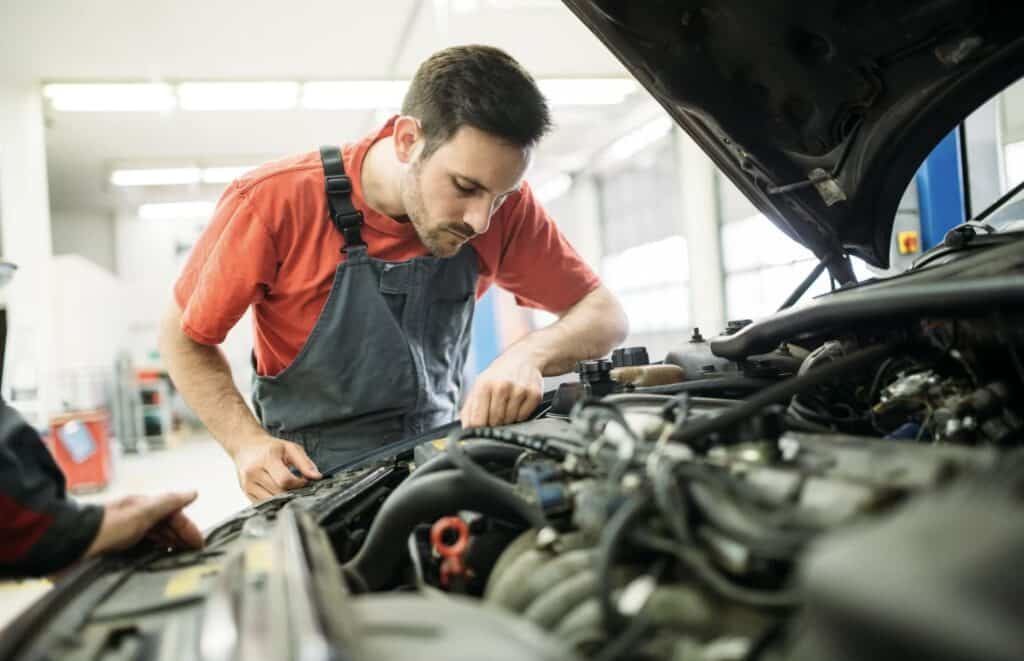
Understanding how long a car can go without an oil change requires knowledge of different factors. These include your vehicle’s specifications and your driving habits, among others. This helps in maintaining the performance and longevity of your car.
Assessing Oil Change Frequency
Your car's manual is a treasure trove of information.
It provides specific oil change intervals tailored to your vehicle model. Typically, modern vehicles can go between 5,000 to 10,000 miles before needing an oil change. But is this interval set in stone?
While a basic guideline is helpful, it's not one-size-fits-all.
Consider factors like your vehicle's age and engine type. Newer engines with synthetic oil may stretch that interval more comfortably. It's essential to schedule an oil change based on these specifics rather than generic advice.
The Impact of Driving Conditions and Habits
Your driving conditions and habits can significantly influence how often you should change your oil. Driving in extreme conditions, such as very hot or cold climates, can break down oil faster.
Similarly, if your daily routine involves stop-and-go traffic, your engine might require more frequent oil changes.
Long drives down the highway? Less stress on the engine, which may extend the interval a bit. Think about how your daily trek affects your oil and consult your owner’s manual for any adjustments in your routine.
Be proactive with oil check-ups to ensure your vehicle runs smoothly in various driving scenarios.
Practical Tips for Timely Oil Changes
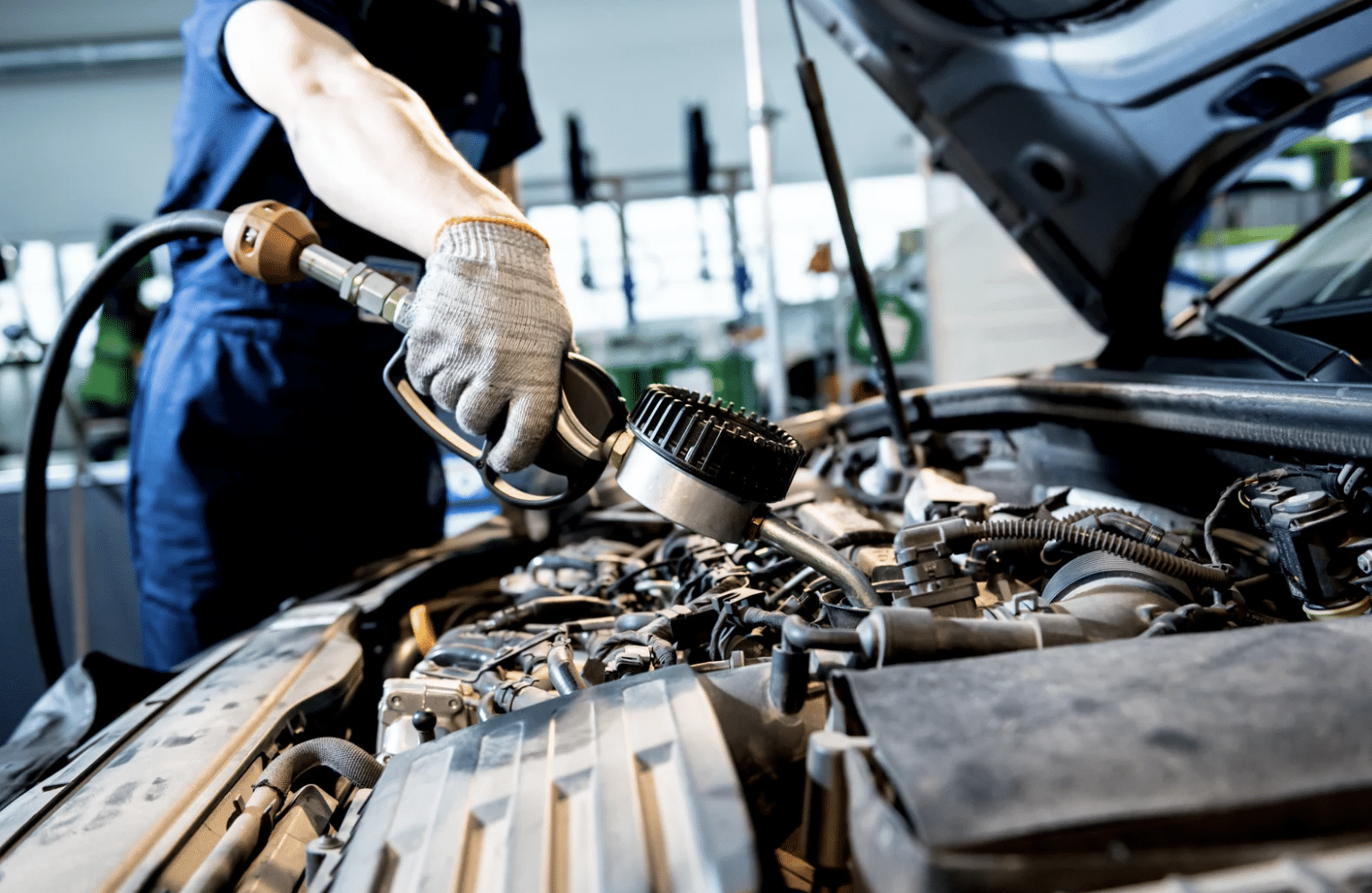
Staying on top of oil changes is a straightforward task that ensures your vehicle's longevity and performance. You'll benefit from tracking oil change intervals, selecting the appropriate oil, and knowing the warning signs of overdue oil changes.
Track Oil Change Intervals
Keeping your oil change schedule is simpler when you're organized. Create a reminder system, whether it's a note on your calendar, a smartphone app, or the old-fashioned method of recording the date and mileage after each oil change.
Check your owner's manual to understand the recommended interval, which often ranges from 5,000 to 10,000 miles. Synthetic oils may extend these intervals, providing you greater flexibility. Using a dipstick to regularly check your oil level can also help you maintain your vehicle effectively.
Select the Right Type of Oil
Choosing the right oil for your vehicle is vital. Synthetic oils offer longer change intervals and better engine protection under extreme temperatures.
They're suited for modern engines and often recommended if you drive in diverse conditions. Conventional oils are the traditional choice for older cars and simpler driving conditions.
Consult your vehicle's manual or a trusted mechanic to select what suits your engine type, driving habits, and climate. The wrong oil could impact engine performance or increase wear, so it's important to get this right.
Signs That It’s Time for an Oil Change
Being aware of your car's behavior can guide you in maintaining its health. A simple check is the oil light or warning light on your dashboard. This indicates it might be time for an oil change or a check-up. Don't wait too long after seeing these signals.
Use the dipstick to assess oil quality and level. Dark, dirty oil means an immediate change is required. If you notice unusual engine noises, it could also be a sign that your car needs fresh oil. Observing these indicators can prevent larger issues down the line.
Keep Your Engine Running Smoothly: Act Now on Our Oil Change Tips!
Regular oil changes are essential to keeping your car's engine in top condition and avoiding costly repairs.
By understanding the risks and following our recommendations, you can ensure your vehicle runs smoothly for years to come. For expert maintenance and reliable service, Blue Ridge Auto is here to help. Contact us today to schedule your next oil change!
When it comes to car maintenance, a common conundrum many face is the cost of suspension repairs.
What exactly are you paying for when your mechanic hands you a quote ranging from $150 to upwards of $3,700?
The cost to repair or replace a car's suspension can be influenced by factors such as the make and model of your vehicle, the specific components that need attention, and the region's cost of living.
Do you need to consider replacing struts, shock absorbers, and wheels all at once, or are there more affordable options?
Suspension repair costs can seem baffling, but understanding the variability helps you make informed decisions. Reflect on this before diving deeper into repair options.
The Basics Of Car Suspension Systems
Every car relies on a well-functioning suspension system for a smooth, stable ride. You need to be familiar with its components and functions, as well as the different types of suspension systems available.
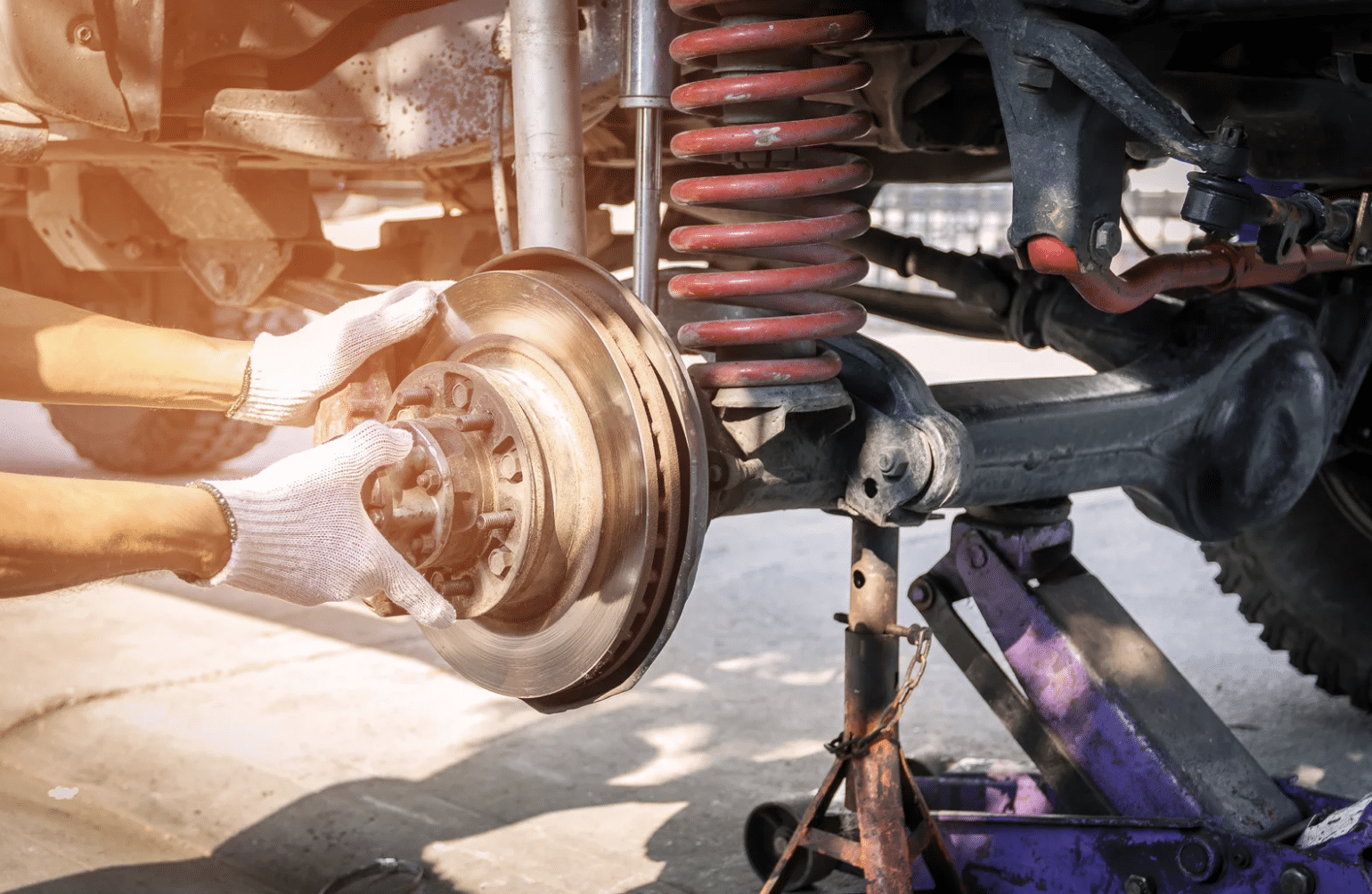
Components and Functions
The suspension system consists of several key parts, each playing a vital role in maintaining your vehicle's stability and comfort.
Shocks and struts absorb road impact, ensuring a smooth ride. They are typically installed on the vehicle's front and rear. The coil springs support the vehicle's weight and maintain ride height.
Moreover, control arms connect the wheels to the car's frame, allowing for controlled movement. Without these components, steering would be ineffective and ride quality would suffer. The interplay among these parts guarantees your car's suspension system works harmoniously to provide a balanced driving experience.
Types of Suspension
There are various types of suspension systems, each catering to different vehicle needs and preferences.
A common type is the MacPherson strut, often found in compact cars due to its space-saving design. Then you've got the double wishbone system, favored for its superior handling and smoother ride—it’s frequently used in sports cars.
Air suspension systems, offering adjustable ride height, are becoming popular in luxury vehicles because they provide a tailored driving feel.
Understanding these systems helps you appreciate the complexity and importance of your vehicle's suspension, paving the way for better performance and safety.
The Costs of Suspension Repair

Car suspension repair costs can fluctuate based on vehicle type, repair complexity, and parts quality. Labor and replacement parts can significantly influence your final bill.
Factors Affecting Repair Costs
Repair costs hinge on varied aspects like vehicle make, model, and year. Older or luxury models may require more complex and costly repairs, sometimes reaching hundreds or thousands of dollars.
Basic cars often have lower repair costs, ranging from $150 to $800. Meanwhile, luxury or performance vehicles might encounter significantly higher costs due to specialized parts and labor requirements.
Going to independent repair shops rather than dealership service centers can often save you money, as labor rates may differ. Therefore, comparing quotes is important for ensuring that you get the best deal.
Labor and Replacement Parts
Labor costs play a major role in your suspension repair expense. Mechanics may charge hourly labor rates that vary by location and expertise. Simple repairs might take less time and cost less. However, complex tasks, like replacing an entire suspension system, may require more hours and specialized skills.
Replacement parts differ widely in cost. Strut replacements might range from $50 to $900, while shock absorbers could cost between $200 and $1,500. Using aftermarket parts instead of original equipment manufacturer (OEM) parts can also impact prices. Aftermarket parts are often cheaper but could lead to compatibility issues, affecting the overall repair quality.
When to Replace Suspension Components
Determining when to replace your vehicle's suspension components can get tricky. Paying attention to the warning signs and keeping up with maintenance helps ensure smooth rides. This section dives into recognizing wear signs and maintenance tips.
Identify Signs of Wear
You're driving, and suddenly, your vehicle takes a nosedive when you brake. Or maybe there's a bouncy feeling over speed bumps. These could be signs of worn shocks or struts. Vibrations at highway speeds? These could be worn or damaged suspension parts.
Look for uneven tire wear. It might indicate suspension issues like defective ball joints or tie rods. Another red flag is trouble steering or drifting to one side. Listen for clunking noises over bumps, pointing to sway bar problems or other suspension damage.
Check for leaks around shocks and struts. If they're oily, it usually means they need replacing. If left unchecked, these issues worsen and cause bigger—and costlier—problems.
Maintenance and Longevity Tips
Do you want your suspension to last? Regular maintenance is your friend. Begin with routine tire rotations and alignments to distribute wear evenly across tires. This will also catch suspension issues early.
Inspect your suspension components every 12,000 miles or during routine service. Your mechanic should check the shocks, struts, and sway bars. They should also look over ball joints and tie rods for wear.
Keep an eye on your driving habits. Avoid potholes when you can, and don’t overload your vehicle. Such stressors accelerate wear and tear. Proper maintenance and attentive driving can extend the life of your suspension and help avoid frequent suspension repairs.
Maximize Your Investment in Suspension Repairs
Understanding car suspension repair costs in 2025 is crucial for maintaining your vehicle without breaking the bank.By planning and budgeting wisely, you can ensure your car remains in top condition. For expert advice and affordable repair services, Blue Ridge Auto is here to help. Contact us today to get started on your car suspension repairs!
Repairing a coolant leak can be costly and complicated, especially with the evolving technologies of 2025. You might wonder, how can such a seemingly small issue in your cooling system result in major expenses?
Whether you're dealing with a minor leakage or a complete system failure, repair costs can range significantly, often impacted by factors like the severity of the leak and the type of equipment involved.
Are you prepared to tackle these costs effectively? Understanding these variables can help you make well-informed choices about maintenance and repair solutions.
What Is a Coolant Leak?
A coolant leak is a common problem in many engines, leading to overheating and potential engine damage. Understanding where the leak originates and its causes is vital for effective repairs and preventing future issues.
Identifying the Source of the Leak
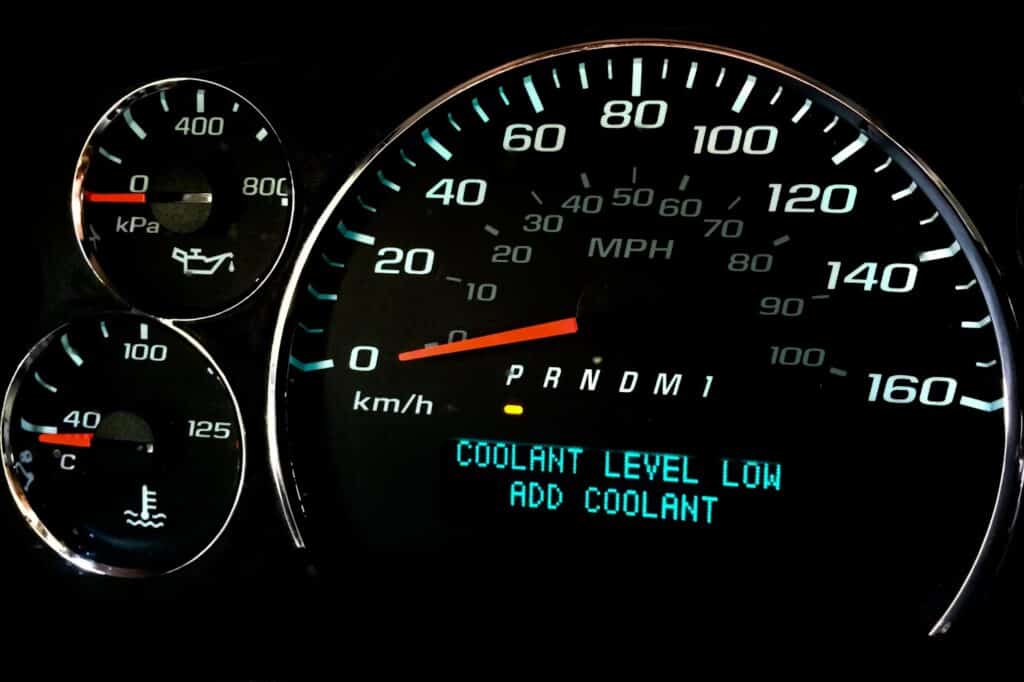
Finding the source of a coolant leak can be a bit like chasing a shadow. Sometimes, it's obvious, like a puddle under your car. Other times, it requires a closer look. Common culprits include the radiator, hoses, or the water pump.
Inspect the radiator for any visible damage or cracks. Hoses might have loose clamps or wear that lets coolant seep out. With the water pump, leaks often appear as a slow drip. Look for signs of dried coolant, which can leave a crusty, colored residue. Use a pressure test if needed to pinpoint hidden leaks.
Common Causes of Coolant Leaks
Why do coolant leaks happen in the first place?
It's often due to wear and tear:
- Over time, gaskets can corrode, leading to fluid seepage.
- Corrosion within the radiator or on connectors can weaken its integrity.
- Heat cycles cause materials to expand and contract, eventually compromising seals.
- Sometimes, it's just a poorly fitted hose or faulty water pump causing issues.
Keeping an eye on your coolant level and performing regular maintenance checks can help nip these problems in the bud. Neglecting these small issues can lead to bigger headaches down the road.
Diagnosis of the Issue and Costs Involved
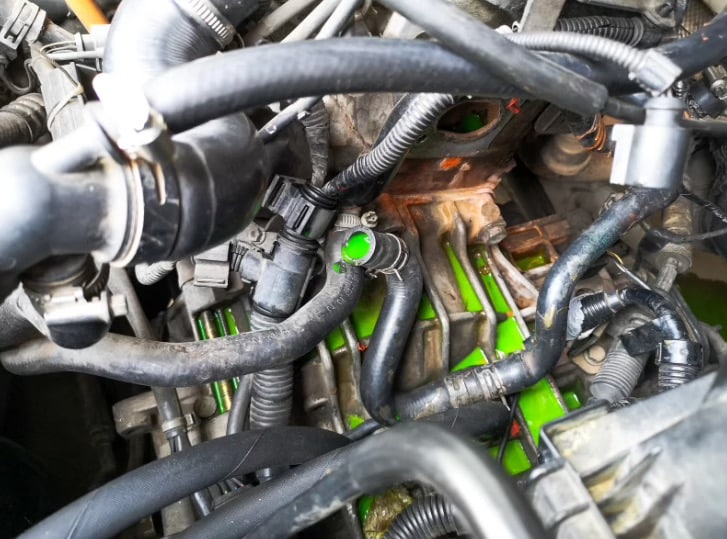
Identifying and fixing coolant leaks in coolant systems involves both professional diagnostic methods and understanding potential repair costs.
If left unaddressed, these leaks can lead to inefficient system performance and increased energy bills.
Professional Diagnosis Methods
When it comes to detecting coolant leaks, professional technicians employ various methods.
These include using UV dyes, which are added to the coolant and later illuminated with ultraviolet light to reveal leaks. Another common technique is the air bubble test, allowing technicians to visually spot leaks by applying a soapy solution to the suspected areas and observing for bubbles.
Professional tools like Coolant System Pressure Testers are also widely used. These devices can pinpoint leaks by forcing coolant through any cracks or failures in the coolant system
By using these methods, technicians can quickly identify the leak's location, assessing its severity before proceeding with repairs.
Expected Repair Costs
Repair costs for coolant leaks vary significantly based on the leak's severity and the system's complexity.
Minor leaks might cost anywhere from $150 to $300, covering basic detection and sealing. This cost increases if component replacement is needed, potentially ranging from $500 to $1,000.
For major leaks requiring extensive repairs or part replacement, the bill may jump further. Here's a quick breakdown:
- Basic Leak Detection and Repair: $150 - $300
- Moderate Repair with Part Replacement: $500 - $1,000
- Extensive Repair or Part Replacement: Up to $1,500+
These figures provide a general idea of potential expenses. However, costs can vary based on your location and the specific vehicle involved.
Always consult with a qualified auto mechanic to get a precise estimate tailored to your situation.
Different Options for Coolant Leak Repair
Deciding how to tackle a coolant leak is critical. Should you roll up your sleeves and handle it on your own, or turn to an expert who specializes in solving these issues?
Consider the complexity, potential risks, and costs involved before making the call.
DIY Repairs versus Professional Services
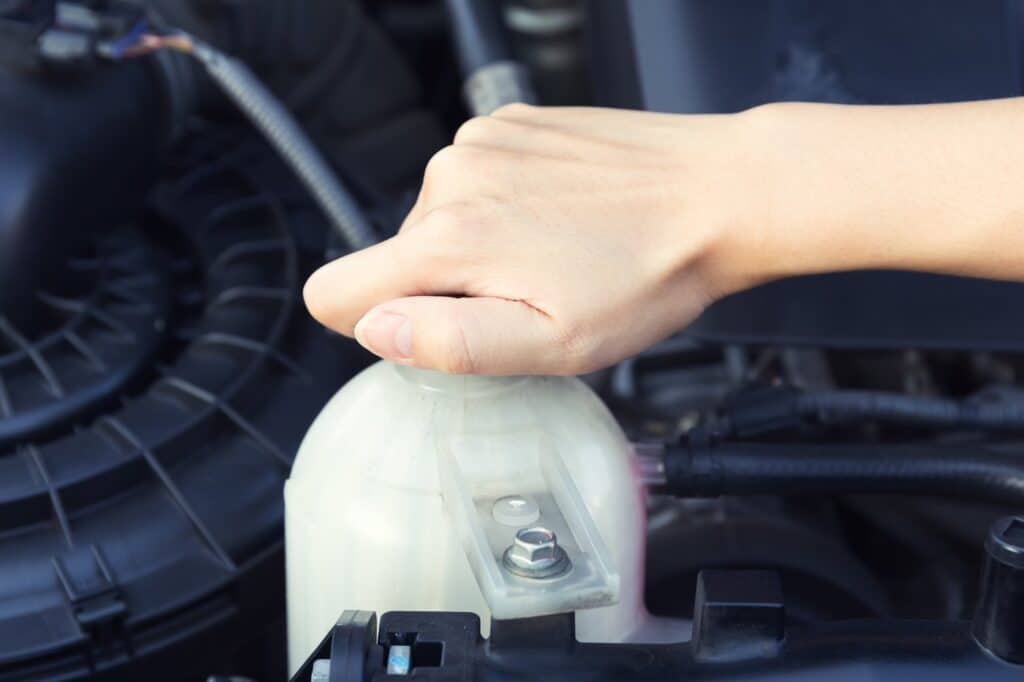
Tackling a coolant leak yourself can be tempting, especially if you're handy with tools and enjoy solving problems.
Doing it yourself may save you some money, but it'll require time, patience, and the right skill set. You’ll need to properly identify the leak source and understand the system's layout. Without this, you could end up with more damage or overlook warning signs needing a thorough approach.
On the other hand, professional services ensure that the job is done correctly and safely. Technicians are trained to pinpoint even the trickiest leaks and ensure they’re repaired with precision.
Although this option might carry higher upfront costs, it often saves you from future expenses stemming from improper fixes. Keep in mind, a technician might offer guarantees or warranties on their work, which can add peace of mind.
When Should You Consult a Technician?
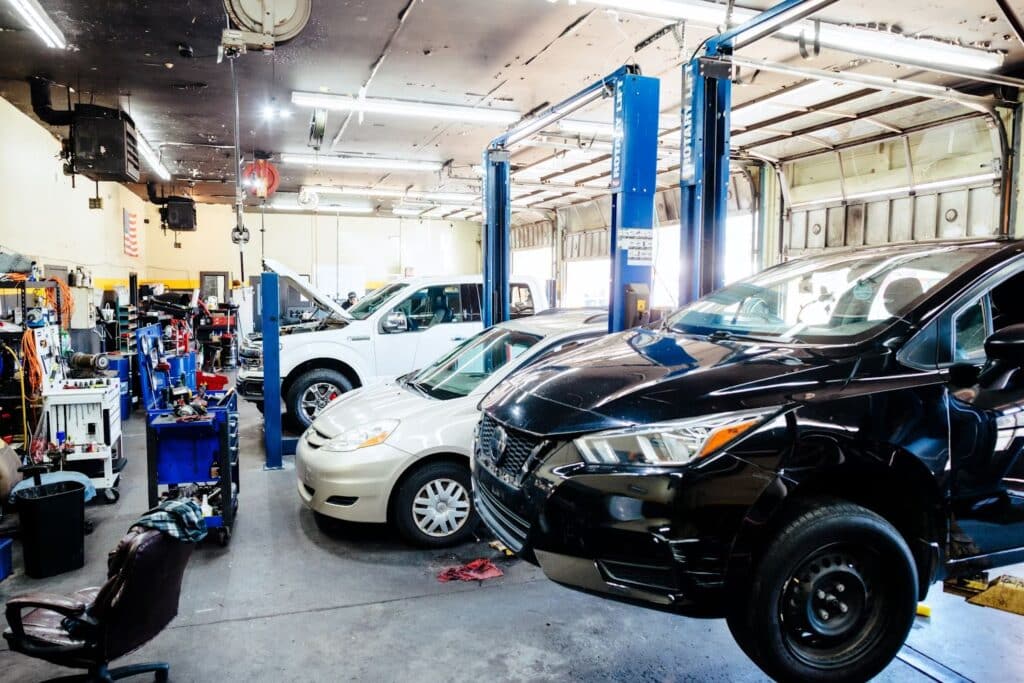
There are times when it’s best to put your tools down and pick up the phone. If the leak source is hard to find, a professional's acute eye can make a difference.
Imagine facing a complex system with numerous potential failure points. Not all leaks are straightforward, and some require specialized equipment or parts only a technician possesses.
Furthermore, if you’re inexperienced, the likelihood of mishaps increases. The cost of worsening the problem can far exceed the initial savings from DIY attempts. Consider time constraints, safety concerns, and the potential need for comprehensive diagnostics. When in doubt, calling in a professional is often the wise choice.
Finishing Up: Post-Repair Considerations
Once the repair is complete, what's next on your checklist? You need to conduct a thorough inspection of the issue. After the repair, ensure there are no remnants of leaks or other complications.
This is not just about looking at the surface; you’ve got to dig deeper. Are all parts functioning as they should?
Don’t Overlook The Coolant
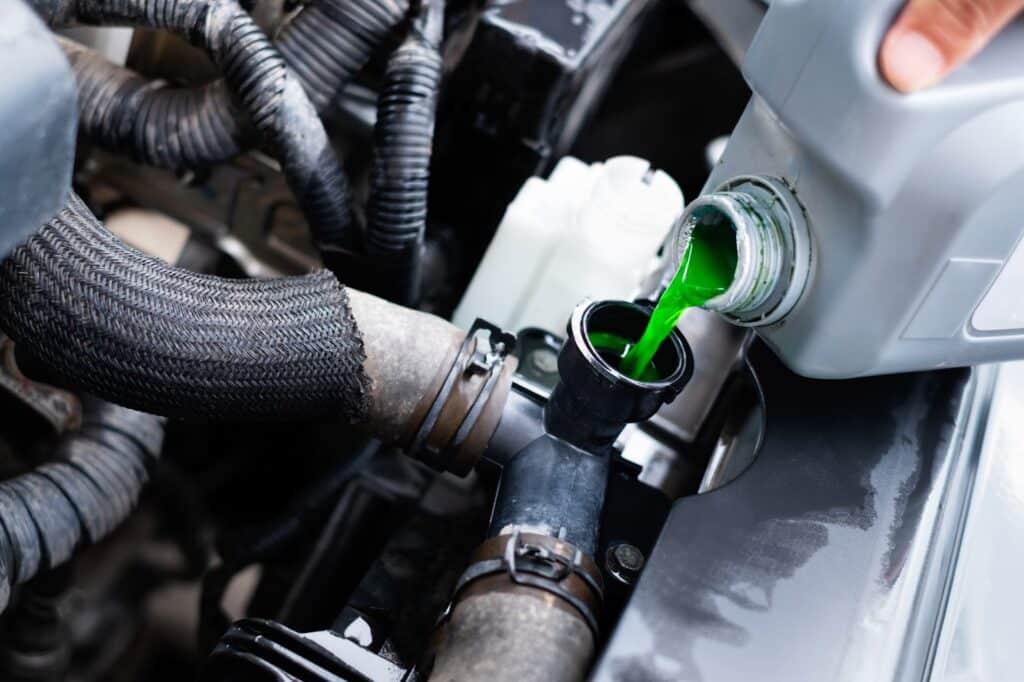
When dealing with a coolant leak, one can't overlook the engine coolant itself. Check its level and top it up if necessary. Remember, the coolant is essential to maintain your vehicle's efficiency—if any was lost during the repair, be sure to add the recommended type for your system.
Other Parts
Let's not forget the environment where the leak occurred.
Check for mold in surrounding areas. This will require more than a casual glance. Mold can form in damp spots, creating a hazardous situation that needs immediate attention. It’s a health risk and could worsen if left untreated.
Last but not least, consider the parts you've replaced. Whether it’s hoses, seals, or other components, ensure they're of good quality and properly installed.
Replacement often ensures longevity and saves future hassles. Taking these steps now could spare you from headaches and additional costs later.
Coolant Leak? Blue Ridge Auto Can Help!
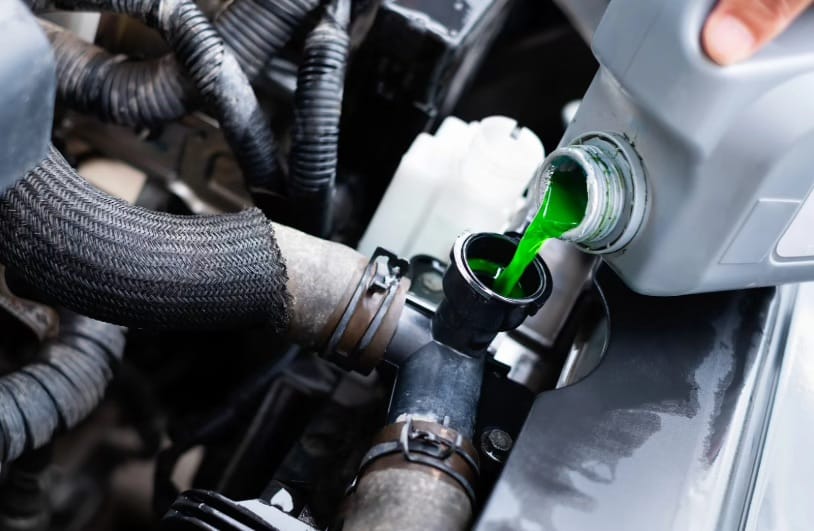
Repairing a coolant leak can prevent further damage to your vehicle and save money in the long term. Have you ever considered the cost implications? A small investment in timely repairs can avoid bigger expenses down the line.
Addressing coolant leaks involves diagnosing the problem, which requires specialized tools and skills. Experienced mechanics can efficiently pinpoint and resolve problems, ensuring your vehicle's optimal performance.
Your safety can depend on how promptly you deal with these issues. Leaking coolant can lead to engine overheating and serious damage. What if this could be prevented by early detection?We at Blue Ridge Auto offer professional services for coolant leak repair. With skilled technicians and state-of-the-art equipment, our team ensures a thorough job at a fair cost. Contact Blue Ridge Auto today to schedule a service for your coolant leak repair needs!
When was the last time you took action at the first sign of a problem with your vehicle? Routine maintenance is key, but addressing issues as soon as they arise is just as important. Regular diagnostics aren’t preventative, but they play a crucial role in catching problems early—before they escalate into costly repairs or breakdowns.
Let’s explore why regular diagnostics can help prevent major repairs, breaking down the benefits, key components, and why ignoring these essential checks can lead to trouble.
What Is a Car Diagnostics Test?
A car diagnostic test involves using specialized equipment and software to examine your vehicle’s electronic systems. Today’s cars are equipped with advanced onboard computers that monitor various components, such as engine performance, transmission health, and fuel efficiency. Diagnostics provide insight into what’s happening under the hood, especially when something isn’t working as it should.
Diagnostics aren’t preventative in the traditional sense, but they are essential for identifying the root cause of a problem. By promptly addressing any issues, you can avoid major repairs and keep your vehicle running smoothly.
Understanding How Regular Diagnostics Save You Money
Many drivers ignore early warning signs until their vehicles face major issues. However, waiting too long to address problems can turn a manageable fix into an expensive repair. That’s where diagnostics come in.
Diagnostics are most effective when they’re conducted as soon as a problem arises. For example, if your check engine light (CEL) illuminates, a diagnostic can pinpoint the issue before it worsens. An electrical fault might reveal that your starter or alternator is failing, allowing you to replace it before you end up stranded. Similarly, noticing unusual engine performance can help you identify timing issues early and address them before they cause catastrophic engine failure.
Diagnostics won’t catch issues before they start, but acting quickly when warning signs appear can help you avoid costly breakdowns.
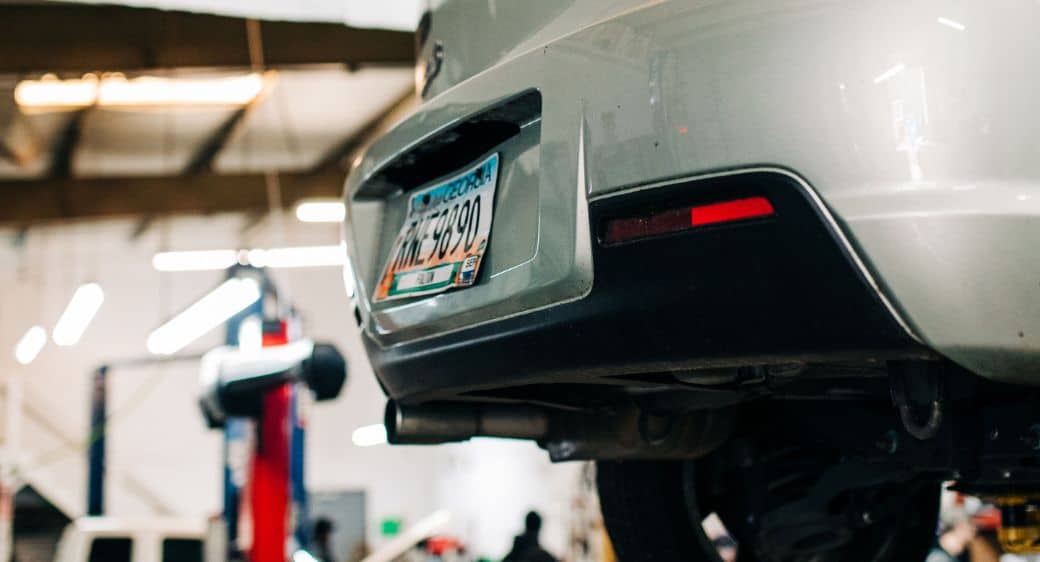
Reducing Vehicle Downtime
Your car is a crucial part of your daily life, from work commutes to running errands. A sudden vehicle breakdown can disrupt your entire schedule, but diagnostics can help you get your vehicle fixed as quickly as possible.
For instance, a diagnostic might reveal that your vehicle’s problems are results of the battery’s functionality deteriorating. Addressing this issue before the battery dies completely ensures your car stays road-ready. Furthermore, quickly diagnosing the issue means fewer days at the mechanic and more time with a reliable vehicle. A brief service appointment now can prevent extended downtime later when waiting for major repairs.
Enhancing Overall Vehicle Safety
Modern cars are equipped with advanced safety and performance systems designed to enhance reliability and efficiency. However, these systems can function properly only when the driver is able to quickly identify and resolve potential issues.
Diagnostics pinpoint the source of an issue once it has already begun to affect your vehicle. Ignoring such warnings or irregularities can cause major failures, leading to costly repairs or even compromising your safety on the road. Acting quickly when a warning light appears or when you notice unusual behavior in your vehicle ensures that you can address the problem before it turns into something more serious.
Though diagnostics comes after you’ve detected an issue, it still plays a vital role in keeping your vehicle reliable, efficient, and safe to drive. By staying proactive and immediately addressing problems when they arise, you can minimize safety risks, reduce repair costs, and extend the life of your vehicle.
Diagnosing Electrical and Software Updates
Vehicles today are essentially computers on wheels, with software and electrical systems powering a significant portion of their functionality. Electronic malfunctions can lead to a wide range of issues, such as dead sensors, irregular fuel readings, malfunctioning lights, or unexplained dashboard glitches. These problems can disrupt your vehicle's performance or even compromise your safety. Diagnostics play a crucial role in pinpointing the root cause of these issues, allowing a mechanic or technician to promptly address and repair the specific systems that are malfunctioning. This minimizes downtime and keeps your vehicle running smoothly.
Extending Your Vehicle’s Life
When you invest in a car, you want it to last. A well-maintained vehicle can easily serve you for many years, provided you look after it.
Addressing minor issues, like replacing fluids or repairing small electrical faults, safeguards more expensive components. For example, clean filters and functional O2 sensors help prevent strain on your vehicle’s transmission and efficiency systems, effectively reducing premature aging of critical components. A diagnostics exam can ensure your mechanic is able to catch any issues and fix their causes, extending your vehicle’s longevity.
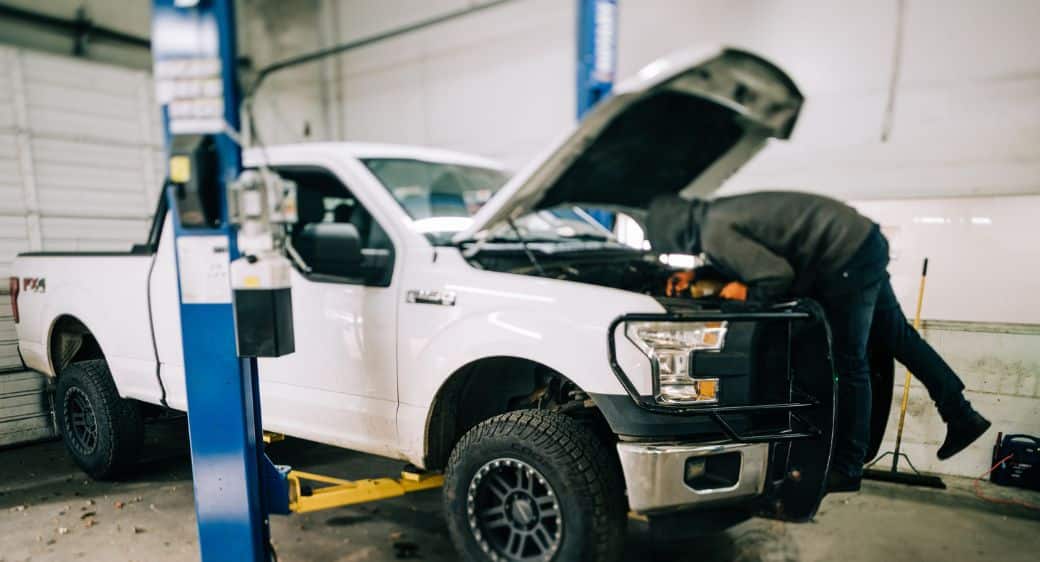
Lowering Long-Term Repair Costs
Without proper diagnostics, chasing minor vehicle symptoms can feel like targeting a moving goalpost. Misdiagnosed issues can mean unnecessary replacements or repeated trips to the mechanic, piling on the long-term maintenance costs.
Diagnostics take the guesswork out of maintenance by pinpointing exact problems. Instead of one-size-fits-all repairs, your technician gets to the heart of the issue, eliminating mechanical trial and error. Efficiently solving problems through targeted diagnostics keeps your long-term repair costs much lower.
Why Our Services Make All the Difference
At Blue Ridge Automotive, we provide expert car diagnostic services tailored to your vehicle’s unique needs. Our team utilizes industry-leading diagnostic tools to analyze the health of your vehicle and catch any issues before they escalate.
No matter the issue, we’re here to help. With every diagnostics test, we strive to give you transparent results and advice so you can hit the road with confidence.
By now, it’s clear that diagnostics are essential. Catching issues at the first signs of a problem instead of after they escalate saves you money, reduces downtime, and keeps you safer on the road. Diagnostics also extend your vehicle’s lifespan, promote environmental efficiency, and even protect warranties.
Now that you know why regular diagnostics can help prevent major repairs, you can see how a quick response to a check engine light leads to a better driving experience. Schedule your next diagnostic appointment with Blue Ridge Automotive and enjoy the peace of mind that comes with knowing your car is in expert hands.
Have you ever wondered what keeps your vehicle running smoothly? Among the many components that contribute to your car’s performance is transmission fluid. Though it ensures your vehicle operates efficiently, many car owners often overlook it. This blog post will explore the role of transmission fluid in your vehicle, shedding light on its importance, how to maintain it, and what happens if you neglect it.
Understanding Transmission Fluid
Manufacturers designed transmission fluid specifically for use in the transmission, a system responsible for transferring power from the engine to the wheels. This fluid plays multiple roles, including cooling, lubricating, and facilitating gear shifts.
Typically, transmission fluid consists of a blend of base oils and additives, which reduce friction and prevent corrosion and wear within the transmission system. The transmission fluid’s quality can significantly affect your vehicle’s performance. For example, high-quality transmission fluid can extend the life of your transmission system, while subpar fluids might lead to premature wear and tear. Therefore, choosing the right type of transmission fluid for your vehicle is critical.
There’s no one-size-fits-all solution when it comes to transmission fluid maintenance. Different vehicles require specific types of fluid, and using the wrong one can cause more harm than good. Always consult your vehicle’s manual or a trusted mechanic to ensure you’re using the appropriate fluid for your car’s make and model.
The Cooling Function of Transmission Fluid
One of the primary roles of transmission fluid is to cool the transmission system. The vehicle generates heat as it operates, and this fluid helps dissipate it. Without it, the transmission components could overheat, leading to severe damage.
Overheating might seem like a distant concern for many drivers. However, it’s a common issue that can result in costly repairs if you don’t promptly address it. Transmission fluid circulates heat away from the system, maintaining optimal operating temperatures and preventing parts from warping or failing.
But how can you tell if your transmission fluid is effectively cooling the system? One sign is its color. Fresh fluid is typically red or pink, while overheated fluid may appear dark brown or black. Regularly checking the fluid’s condition can help you catch potential cooling issues early.
Lubricating the Transmission System
Friction can lead to component degradation over time, ultimately affecting the vehicle’s overall performance. Proper lubrication from transmission fluid helps the parts move freely, reducing the likelihood of mechanical failures.
Regular maintenance can ensure your transmission fluid maintains its lubricating properties. Neglecting this aspect can result in grinding gears, delayed shifts, or even complete transmission failure. Keeping an eye on fluid levels and quality is a simple yet effective way to protect your transmission system.

Facilitating Gear Shifts
Your transmission fluid might be to blame if you’ve experienced jerky or delayed gear shifts. This vital fluid facilitates smooth gear transitions, making driving a more pleasant experience.
Inadequate fluid levels or degraded fluid can cause difficulty when shifting gears, leading to a less responsive vehicle. This reduced responsiveness affects driving comfort and compromises safety on the road. Regular checks and timely fluid replacements can prevent these issues from arising.
The Role of Transmission Fluid in Preventing Corrosion
Corrosion is a significant threat to your transmission system, but did you know that transmission fluid can help prevent it? The additives in the fluid form a protective barrier, safeguarding the internal components from rust and corrosion.
Corrosion can weaken the structural integrity of transmission parts, leading to premature failure. By maintaining the fluid, you’re actively protecting your vehicle’s transmission from corrosive damage.
Regular fluid checks can ensure that the additives remain effective. It might be time for a change to continue protecting your transmission if you notice a decrease in fluid quality.
Signs of Transmission Fluid Problems
Recognizing the signs of transmission fluid problems can save you from costly repairs. Indicators include unusual noises, slipping gears, and a burning smell.
Investigate further if you notice any of these symptoms. Ignoring them can lead to more significant issues down the road. Regular checks can help you identify problems before they escalate, allowing for timely intervention.
Think of transmission fluid problems as a warning light on your dashboard. They signal that something isn’t right and requires immediate attention. Prompt action can prevent long-term damage to your vehicle.
How To Check Transmission Fluid Levels
Checking transmission fluid levels isn’t as daunting as it might seem. With a few simple steps, you can ensure your vehicle’s fluid is at the right level. But how do you go about it?
First, locate the transmission fluid dipstick, usually found near the back of the engine bay. With the engine running and in the park, remove the dipstick and wipe it clean. Reinsert it fully and then remove it once more to check the fluid level.
Top your fluid up with the appropriate fluid for your vehicle if the level is low. Regularly assessing fluid levels can prevent potential issues and keep your vehicle running smoothly.
When To Change Transmission Fluid
Knowing when to change your transmission fluid can prevent many common problems. While recommendations vary by manufacturer, a general rule of thumb is to change it every 30,000 to 60,000 miles.
Over time, transmission fluid can degrade, losing its effectiveness. Changing it ensures that the transmission system remains well-lubricated and cooled, prolonging the life of your vehicle.
Consulting your vehicle’s manual or a trusted mechanic for specific guidelines is crucial. Sticking to a regular maintenance schedule can prevent unexpected breakdowns and costly repairs.
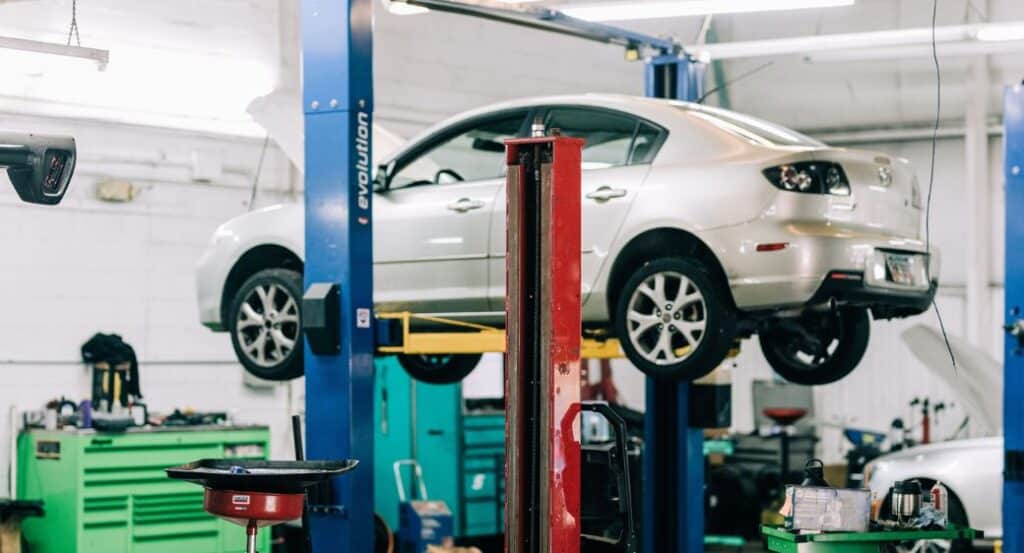
Different Types of Transmission Fluid
With several types of transmission fluid available, choosing the right one can be overwhelming. From full synthetic to mineral-based, each type offers unique benefits.
Synthetic fluids are often more resilient to heat and oxidation, making them an excellent choice for high-performance vehicles. Mineral-based fluids, on the other hand, might be more suitable for older models.
Consulting your vehicle’s manual or a professional can guide you in making the best choice. The right fluid type can significantly impact your vehicle’s performance and longevity.
Common Misconceptions About Transmission Fluid
Many misconceptions surround transmission fluid, leading to incorrect maintenance practices. One common myth is that it’s a “lifetime” fluid, requiring no replacement. However, this couldn’t be further from the truth.
Another misconception is that you can use any fluid in all vehicles. Using the wrong type can lead to severe damage and costly repairs. Understanding your vehicle’s specific needs and adhering to the manufacturer’s guidelines is essential.
Debunking these myths can help you maintain your transmission system effectively, ensuring your vehicle remains in top condition.
Conclusion
Understanding the role of transmission fluid in your vehicle helps car owners keep their transmission system in excellent condition. Remember that we offer transmission replacement services to help you maintain your vehicle’s performance if you’re unsure about the state of your transmission fluid or need assistance. Prioritize your car’s health, and it will serve you well for years to come.
When was the last time you checked your car's engine? Many drivers overlook this crucial aspect of vehicle maintenance, leading them to inadvertently cause serious problems. This blog post will explore 12 common engine problems identified through diagnostics. By the end, you'll understand why regular diagnostics can save you time and money.
Misfiring Cylinders
A misfiring cylinder is one of the most frequent engine problems. It occurs when the air-fuel mixture in the cylinder fails to ignite correctly. This issue can lead to decreased engine power and increased emissions. Diagnostics can pinpoint the misfiring cylinder and determine the underlying cause.
Several factors can cause cylinders to misfire, including faulty spark plugs, ignition coils, or fuel injectors. Identifying the specific cause is essential for resolving the issue promptly. Regular maintenance and timely diagnostics can prevent misfiring, ensuring your engine runs smoothly.
Failing to address misfiring cylinders can lead to more significant engine damage. This damage can be costly to repair, making early detection and resolution vital.
Engine Overheating
Engine overheating typically results from issues with the cooling system, such as a faulty thermostat, water pump, or radiator. Regular engine diagnostics can help identify overheating issues before they lead to catastrophic failure. Diagnostics can detect leaks, blockages, or malfunctioning components by monitoring the cooling system. Timely repairs can prevent overheating and extend your engine's lifespan.
Ignoring engine overheating can lead to warped cylinder heads, a blown head gasket, or a cracked engine block. These problems are costly and challenging to repair, emphasizing the importance of early detection through diagnostics.
Fuel System Issues
The fuel system is crucial for delivering the right amount of fuel to the engine. Problems within this system can lead to reduced performance, increased emissions, and even engine failure. Diagnostics play a pivotal role in identifying fuel system issues early on.
Common fuel system problems include clogged fuel injectors, a failing fuel pump, and a dirty fuel filter. Diagnosing these issues in their early stages can prevent further damage and improve your vehicle's fuel efficiency. Proper maintenance and regular diagnostics keep your fuel system functioning optimally.
Ignoring fuel system problems can lead to engine stalling, poor acceleration, and reduced fuel economy. These issues affect your driving experience and can lead to costly repairs.
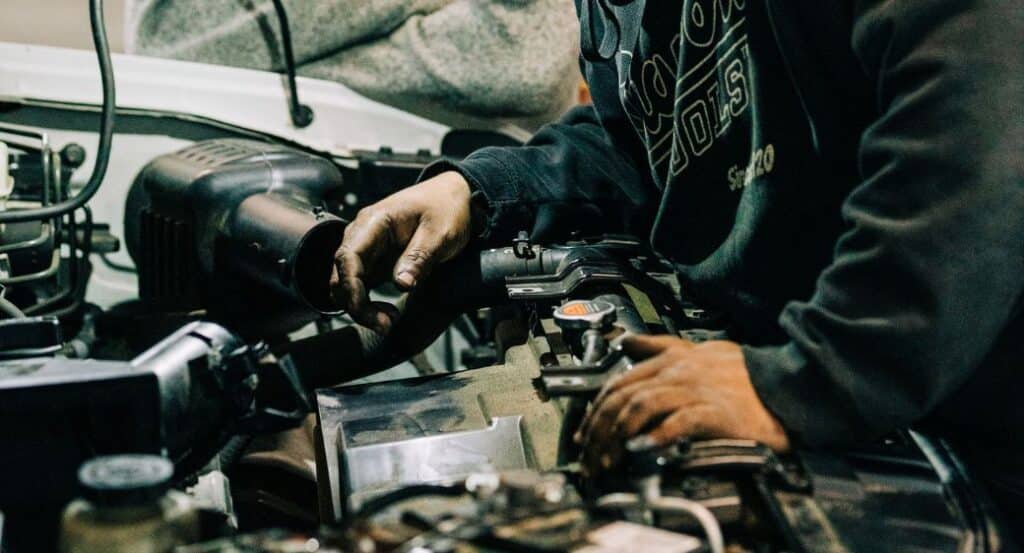
Faulty Oxygen Sensors
Oxygen sensors are vital components of your vehicle's emission control system. They monitor the exhaust gases and ensure the engine uses the correct air-fuel mixture. Faulty oxygen sensors can lead to increased emissions and decreased fuel efficiency.
Diagnostics enable you to identify malfunctioning oxygen sensors before they affect your vehicle's performance. Replacing faulty sensors promptly ensures your engine runs smoothly and meets emission standards. This proactive approach helps avoid potential fines or penalties related to excessive emissions.
Ignition Coil Problems
Ignition coils convert voltage from the battery into the spark needed to ignite the air-fuel mixture in the cylinders. Faulty ignition coils can lead to misfires, poor performance, and increased emissions. Diagnostics can help identify ignition coil problems early.
One of the most common signs of ignition coil failure is engine misfiring. Detecting and replacing faulty ignition coils promptly can prevent further engine damage.
Exhaust System Failure
The exhaust system is crucial in reducing harmful emissions and maintaining engine performance. Problems within the exhaust system can lead to increased noise, reduced power, and higher emissions. Diagnostics are essential for identifying exhaust system issues early on.
Common exhaust system problems include leaks, clogged catalytic converters, or damaged mufflers. Detecting these issues early can prevent further damage and ensure compliance with emission standards.
Ignoring exhaust system problems can lead to decreased fuel efficiency, increased emissions, and costly repairs. Diagnostics help keep your exhaust system in top condition, ensuring your engine runs efficiently and meets emission standards.
Timing Belt or Chain Issues
The timing belt or chain controls the opening and closing of the engine's valves. Problems with the timing belt or chain can lead to engine misfires, decreased performance, and potential engine damage. Ignoring timing belt or chain problems can lead to catastrophic engine failure and costly repairs.
Vacuum Leaks
Vacuum leaks can cause many engine problems, including rough idling, poor acceleration, and increased emissions. Diagnostics can help identify vacuum leaks early and prevent further damage. Addressing vacuum leaks promptly ensures your engine runs smoothly and efficiently.
Damaged hoses, gaskets, or intake manifold components are common causes of vacuum leaks. Regular diagnostics help detect these issues before they lead to more severe problems. Addressing vacuum leaks early can maintain your engine's performance and fuel efficiency.
Ignoring vacuum leaks can lead to decreased fuel economy, poor performance, and costly repairs. Diagnostics are crucial in identifying and fixing vacuum leaks, ensuring your engine runs optimally.
EGR System Malfunctions
The exhaust gas recirculation (EGR) system reduces nitrogen oxide emissions by recirculating some exhaust gases into the engine. Common EGR system problems include clogged passages, faulty valves, or malfunctioning sensors. Detecting these issues early can prevent further damage and ensure compliance with emission standards. Regular diagnostics maintain your EGR system's performance and prolong its lifespan.
Ignoring EGR system malfunctions can lead to increased emissions, decreased fuel efficiency, and costly repairs. Regular diagnostics help keep your EGR system in top condition, ensuring your engine runs efficiently and meets emission standards.
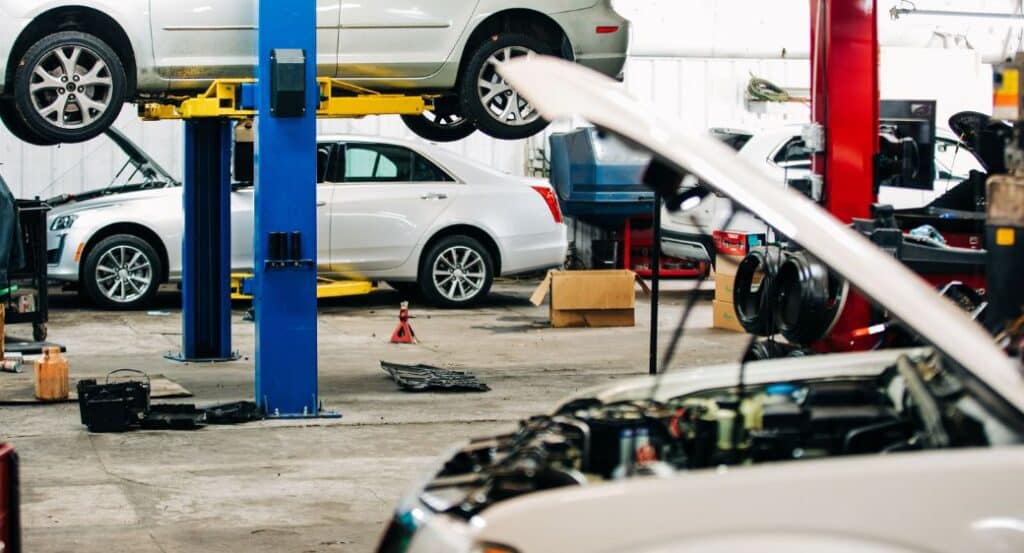
Engine Knock
Engine knock, or pinging, occurs when the air-fuel mixture detonates prematurely in the cylinders. This issue can lead to decreased performance and potential engine damage. Detecting these issues early can prevent further damage and improve your engine's performance.
Ignoring engine knock can lead to decreased fuel efficiency, increased emissions, and costly repairs. Diagnostics are crucial in identifying and fixing the causes of engine knock, ensuring your engine runs optimally.
Oil Leaks
Oil leaks can lead to decreased engine performance, increased wear, and potential engine damage. Diagnostics help identify the source of oil leaks early and prevent further damage.
Damaged gaskets, seals, or oil pan components are common causes of oil leaks. Regular diagnostics help detect these issues before they lead to more severe problems. By addressing oil leaks early, you can maintain your engine's performance and prolong its lifespan.
Clogged Air Filters
A clogged air filter can restrict airflow to the engine, leading to decreased performance, increased emissions, and reduced fuel efficiency. Diagnostics help identify clogged air filters early and prevent further damage.
Dirt, debris, and contaminants are common causes of clogged air filters. Detecting these issues early can prevent further damage and improve your engine's performance. Ignoring clogged air filters can lead to decreased fuel economy, poor performance, and costly repairs.
Conclusion
Identifying and addressing engine problems promptly can ensure your vehicle continues to run as expected. Luckily, these 12 common engine problems are easily identified through diagnostics.
Our facility offers comprehensive engine repair services to address any issues you may encounter. Our team of experienced technicians is ready to help you maintain your engine and keep your vehicle in top condition. Contact us today to schedule a diagnostic test and ensure your engine runs at its best.
If you're an off-road enthusiast or are looking to enhance your vehicle's appearance and performance, you've likely considered the pros and cons of suspension lifting vs. leveling. This topic is crucial for anyone looking to modify their vehicle, and understanding the benefits and drawbacks of each can make all the difference. In this blog post, we'll break down the differences between the two to help you make an informed decision.
Suspension Lifting
Why Modify Your Suspension?
Before we dig into the specifics, let's address why you might want to modify your vehicle's suspension in the first place. Suspension modifications can improve your vehicle's off-road capabilities, enhance its appearance, and even boost its resale value. But the choices can be overwhelming. Should you go for a suspension lift or just a leveling kit? The answer depends on your needs, lifestyle, and budget.
What Is Suspension Lifting?
Suspension lifting involves raising the entire vehicle's height by modifying its suspension system. This method increases ground clearance, allowing for larger tires and better performance on rugged terrains. Many off-road enthusiasts prefer suspension lifts for this very reason.
Benefits of Suspension Lifting
One of the most significant benefits of suspension lifting is enhanced off-road capability. The increased ground clearance allows your vehicle to tackle rough terrains with ease. Additionally, a lifted vehicle can accommodate larger tires, further improving traction and performance.
Suspension lifting also gives your vehicle a more aggressive and imposing appearance. If you want to make a statement, lifting your suspension can help you achieve that.
Lastly, a well-executed suspension lift can increase your vehicle's resale value. Buyers often look for vehicles that have been modified for better performance, making a lifted vehicle more appealing.
Drawbacks of Suspension Lifting
While suspension lifting offers numerous benefits, it also has its drawbacks. First and foremost, it can be expensive. The lift kit's cost, installation, and potential modifications to other parts can add up quickly.
Another downside is the potential for a rougher ride. Lifting your vehicle can alter its center of gravity, making it less stable and more prone to tipping. This can be a significant safety concern, especially if you frequently drive on highways or in city traffic.
Lastly, a lifted suspension can strain your vehicle's components, such as the steering system and suspension. This can lead to increased wear and tear, requiring frequent maintenance and repairs.
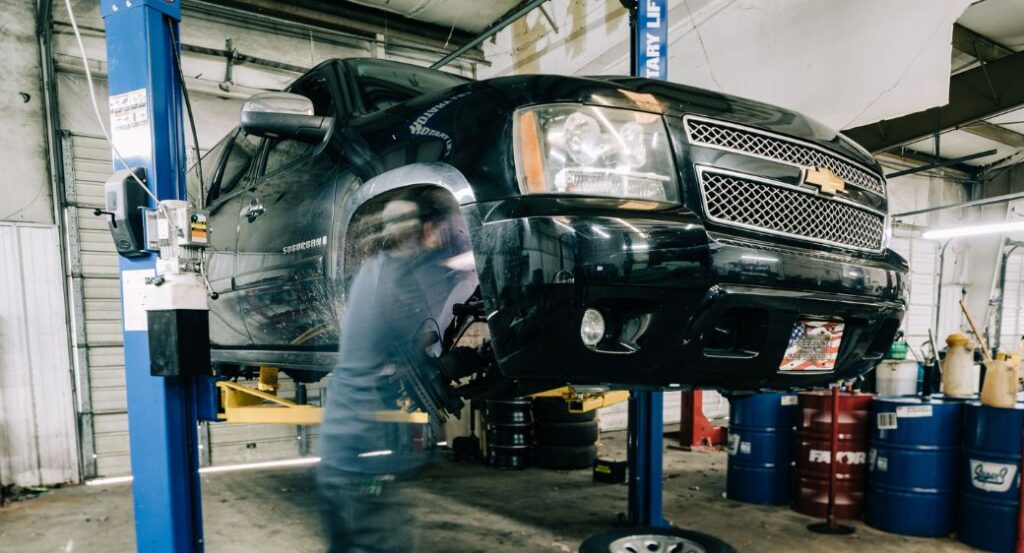
Leveling
What Is a Leveling Kit?
On the other hand, a leveling kit is designed to raise the front of your vehicle to match the height of the rear. Many trucks and SUVs come from the factory with a slight front-end rake, meaning the rear sits higher than the front. A leveling kit corrects this imbalance, giving your vehicle a more level stance.
Benefits of a Leveling Kit
One of the primary benefits of a leveling kit is improved appearance. By raising the front of your vehicle, you achieve a more balanced and aesthetically pleasing look. This simple modification can significantly affect your vehicle's overall appearance.
Leveling kits are also more affordable than suspension lifts. They require fewer modifications and are generally easier to install, making them a cost-effective option for those looking to improve their vehicle’s stance without breaking the bank.
Finally, a leveling kit lets you fit slightly larger tires on your vehicle, improving traction and performance without needing a full suspension lift.
Drawbacks of a Leveling Kit
While leveling kits are more affordable and easier to install, they have limitations. For starters, they do not provide the same level of ground clearance as suspension lifts. If off-roading is your priority, a leveling kit may not be sufficient.
Another drawback is that a leveling kit does not address other aspects of your vehicle’s suspension. Unlike a full suspension lift, a leveling kit does not improve overall suspension performance and may not be suitable for heavy-duty off-road use.
Choosing Between Suspension Lifting and Leveling
Now that we've explored the suspension lifting vs. leveling pros and cons, how do you decide which option is right for you? The answer depends on your specific needs and preferences. If you prioritize off-road performance and are willing to invest in a more comprehensive modification, suspension lifting is likely the better option. On the other hand, if you’re looking for a cost-effective way to improve your vehicle’s appearance and stance without significant modifications, a leveling kit may be the way to go.
Impact on Vehicle Handling
When choosing between suspension lifting and leveling, one critical factor is the impact on your vehicle's handling. Lifting your vehicle significantly alters its center of gravity, affecting stability and maneuverability. This can be particularly noticeable when driving at high speeds or taking sharp turns.
A leveling kit has minimal impact on your vehicle's handling. Raising only the car's front, the center of gravity remains relatively unchanged, resulting in a more stable and predictable driving experience.
Maintenance Considerations
Suspension lifts and leveling kits require maintenance to ensure optimal performance and longevity. However, suspension lifts generally demand more frequent and intensive maintenance due to the increased strain on your vehicle's components. Regular inspections and adjustments are essential to prevent uneven tire wear and alignment problems.
In contrast, leveling kits typically require less maintenance. Once installed, they generally need fewer adjustments and have a lower risk of causing wear and tear on your vehicle's components.
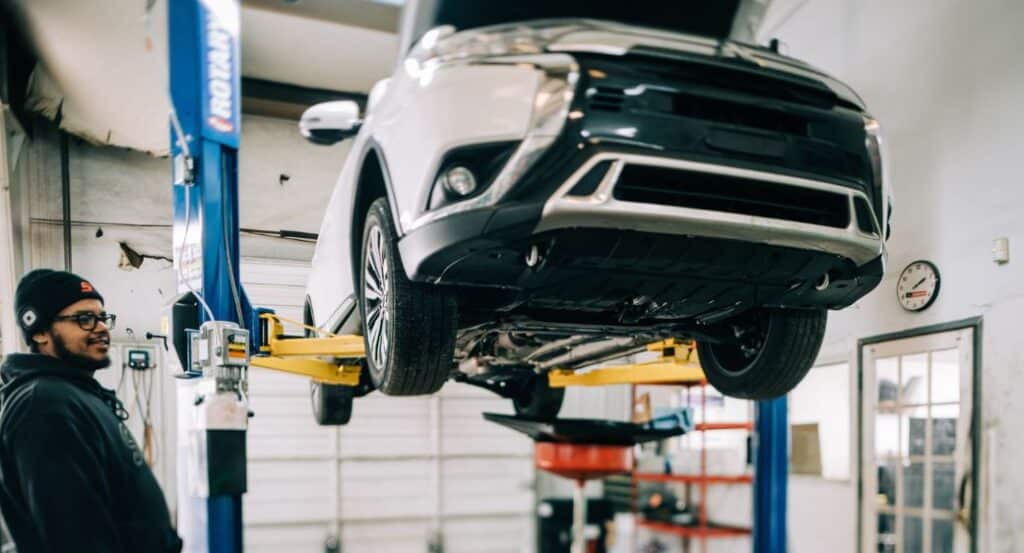
Cost and Installation
The cost and complexity of installation are crucial factors to consider when deciding between suspension lifting and leveling. Suspension lifts are generally more expensive and require professional installation, which can add to the overall cost. Additionally, suspension lifts may necessitate modifications to other parts of your vehicle, further increasing the expense.
On the other hand, leveling kits are more affordable and often simpler to install. While professional installation is recommended, experienced DIY enthusiasts can install many leveling kits, making them a more budget-friendly option.
Legal and Warranty Considerations
Before modifying your vehicle's suspension, it's essential to consider the legal and warranty implications. Suspension lifts, in particular, may affect your vehicle's compliance with local laws and regulations. It’s crucial to check with your local authorities to ensure that your modifications are legal and do not void your warranty.
Leveling kits, being less invasive, generally have fewer legal and warranty concerns. However, verifying that your modifications comply with local regulations and do not void your vehicle's warranty is still important.
Effects on Fuel Efficiency
Another factor to consider when choosing between suspension lifting and leveling is the impact on your vehicle's fuel efficiency. Lifting your vehicle can increase aerodynamic drag, leading to reduced fuel efficiency. This is especially true if you install larger, heavier tires as part of your suspension lift.
In contrast, leveling kits have a minimal impact on fuel efficiency. By making only minor adjustments to your vehicle’s stance, you can enjoy the benefits of improved appearance and tire clearance without significantly affecting your fuel economy.
Conclusion
There is no one-size-fits-all answer when considering the pros and cons of suspension lifting vs. leveling. Your choice ultimately depends on your specific needs, preferences, and budget. By carefully considering the benefits and drawbacks of each option, you can make an informed decision that best suits your needs. Remember, our expert team at BRF Auto Chamblee is here to assist you with all your suspension modification needs, from installation to ongoing maintenance. Contact us today to learn more about our steering and suspension service and start your journey toward a better-performing, better-looking vehicle.
Owning a car comes with responsibilities, and one of the most significant is performing maintenance and repairs. When choosing between taking your vehicle to an independent auto repair shop or a dealership, many car owners find themselves torn. We will explore the benefits of an independent auto repair shop versus a dealership and provide you with valuable insights to make an informed decision.
Personal Touch and Customer Service
One of the many benefits of taking your vehicle to an independent auto repair shop is the personal touch and customer service you receive. At dealerships, you might feel like just another customer. However, the teams at independent shops focus on creating a sense of community and trust. The mechanics know their customers by name, remember their vehicle history, and offer personalized recommendations.
Furthermore, independent shops are known for their transparent communication. They take the time to explain the necessary repairs and maintenance in simple terms, ensuring you understand what they’re doing for your vehicle and why. This level of transparency builds trust and confidence in the service provided, which can be lacking at dealerships.
Cost-Effective Repairs and Maintenance
Independent shops typically offer more competitive pricing compared to dealerships. Dealerships often have higher overhead costs due to their large facilities and brand associations, which can result in higher labor rates and prices for parts and services. On the other hand, independent shops can source parts from various suppliers, allowing them to offer more affordable options without compromising quality.
In addition, independent shops may provide more straightforward billing than dealerships. They focus on delivering value for your money and are less likely to upsell unnecessary services or add hidden fees to your bill. Transparency in pricing ensures you get what you pay for without any surprises.
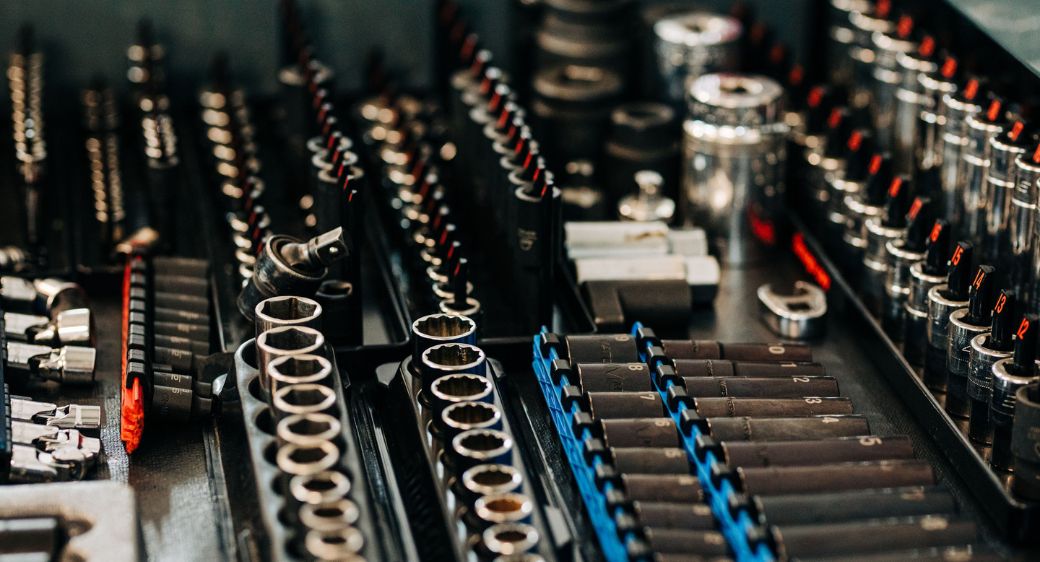
Expertise and Experience
Independent auto repair shops have a lot to offer in terms of expertise and experience. While dealerships employ workers with specialized knowledge of specific brands, independent shops employ highly skilled mechanics with years of experience working on a wide range of vehicle makes and models.
Independent mechanics undergo extensive training and certifications while ensuring they stay up-to-date with the latest advancements in automotive technology. Their broad knowledge base allows them to diagnose and repair issues efficiently, regardless of the vehicle’s brand or model. This expertise is particularly valuable if you own multiple vehicles from different manufacturers.
Furthermore, many independent shops employ mechanics who have previously worked at dealerships. These technicians bring their dealership experience and training to the independent shop, providing clients with the same level of expertise but without the high dealership costs. Their diverse experience allows them to tackle complex repairs and maintenance tasks.
Fast Turnaround Times
Time is of the essence regarding vehicle repairs and maintenance. Independent car maintenance shops often offer faster turnaround times compared to dealerships. When you go to automotive dealerships, you might have to deal with long wait times due to their large customer base and bureaucratic processes.
Independent shops, on the other hand, prioritize efficiency and quick service. With fewer layers of administration and a smaller customer base, they can focus on getting your vehicle back on the road as soon as possible.
Additionally, independent shops are more likely to have shorter lead times for appointments. They understand the urgency of car repairs and strive to accommodate their customers promptly. Quick response times can save you from extended periods of inconvenience and frustration.
Flexibility and Customization
Another advantage of taking your vehicle to independent auto repair shops is their flexibility and customization options. Dealerships often follow strict manufacturer guidelines and protocols, limiting their ability to accommodate unique customer requests.
Independent shops, however, have the freedom to tailor their services to meet individual needs. These mechanics are more willing to go the extra mile to satisfy their customers, whether they are installing aftermarket parts, performing custom modifications, or addressing specific concerns.
This flexibility extends to the types of vehicles they service, as well. The teams at independent shops are not limited to working on a particular automotive brand. They have the freedom, expertise, and resources to handle a diverse range of vehicles, including old models and classic cars. This versatility makes them a one-stop shop for all your automotive needs.
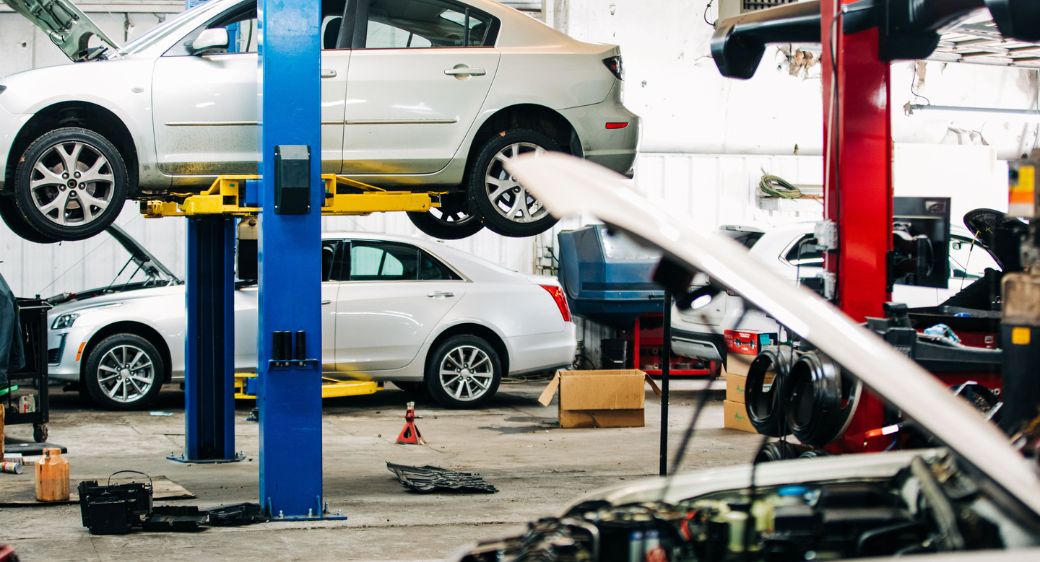
Convenience and Accessibility
Convenience and accessibility are important factors to consider when choosing an auto repair shop. Independent shops are often located in convenient locations, closer to residential areas and away from busy commercial centers. This proximity makes it easier for you to drop off and pick up your vehicle without traveling long distances. Additionally, independent shops might offer shuttle services or loaner vehicles, ensuring you can continue with your daily activities while the team services your car.
Independent shops also tend to have shorter wait times for appointments and quicker turnaround times for repairs than dealerships. These pros understand the importance of minimizing downtime and strive to get you back on the road as soon as possible. Convenience and accessibility make independent shops a practical choice for busy people.
Personalized Recommendations
Independent auto repair shops excel in providing personalized recommendations based on your needs and preferences. They take the time to understand your driving habits, vehicle usage, and budget constraints and tailor their services accordingly.
Whether they are recommending the best maintenance schedule, performance enhancements, or cost-effective repairs, independent mechanics offer valuable insights that cater to your unique situation. This personalized approach ensures you receive the most effective solutions for your vehicle.
Furthermore, independent shops keep detailed records of your vehicle’s service history, allowing them to provide relevant recommendations over time. This continuity in service helps to maintain your vehicle’s performance and longevity while saving you from paying for unnecessary work.
The benefits of an independent auto repair shop versus a dealership are numerous and compelling. Whether you need routine maintenance or complex repairs, independent shops have the expertise and resources to meet your needs. Next time your vehicle requires service, consider the valuable benefits of visiting an independent auto repair shop. You may find that these pros make all the difference in your automotive care!


